Introduction to our journey
In preparation of a book I was writing at the time, I made a journey in 2012 through my beautiful homecountry Ecuador. Together with my wife Wendy and daughter Lisa.
We baptized it the “Condamine-trip”, after Charles-Marie de la Condamine, one of the leaders of the French mission that visited the country between 1736 and 1745.
The main goal was to visit as many “monuments” as possible related to the French mission. That is, the discoverable monuments, besides the almost unknown pyramids, introduced to you in an earlier post: Ecuador – The pyramids; two small pyramids that mark the baseline to the northeast Quito.
In two even earlier posts, I told you the story of how the French mission, while “Measuring the Earth” , provided the country with Its name, Ecuador. A name it chose when the Audiencia de Quito became independent in 1830. Liberating itself from Spain, but also of its bigger neighbours, Peru and Gran Colombia.
Although the French visit took place almost three centuries ago, you still can find some old signs and monuments remembering their presence. Besides the many schools, market places, streets, and others, that are named after them.
Named not only after the French scientists, but also after the two Spanish assistants, Juan & Ulloa. And also after the one and only Ecuadorian scientist who accompanied the mission. Together with La Condamine, Pedro Vicente Maldonado’s name is probably the one most used.
Journey through Ecuador: Quito, the capital
In and around Quito you’ll find several monuments that remind us of the French expedition.
Mitad del Mundo monument
Just to the North of Quito you’ll find the famous Mitad del Mundo monument. Although – as I wrote earlier – the French had nothing to do with this touristic attraction, they are present in and around it. For example, the main avenue – that walks up to the monument – is guarded by the statues of all the expeditionaries.
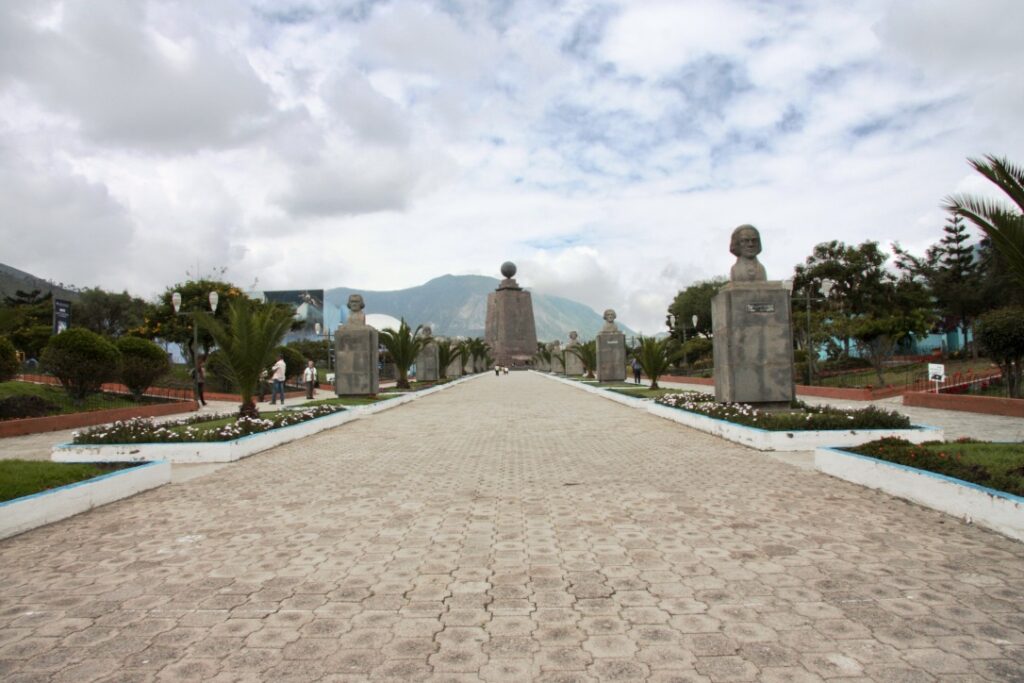
More attention is paid to the mission in the local museums around the Mitad del Mundo monument. As well as to the Second French mission (1901-1906). A expedition that partially repeated the work of their predecessors, again making a journey through Ecuador from north to south.
The Observatory of Quito
In the center of Quito, in the Alameda park, you’ll find the Observatory (inaugurated in 1873).
In front of the entrance you’ll find the only plaque that survived the demolition of the pyramids that marked the baseline. Due to time, rain and sun, you can barely read the words on the plaque anymore. Therefore, to conserve what is left, it’s protected by plexiglass, on which you’ll find the original text.
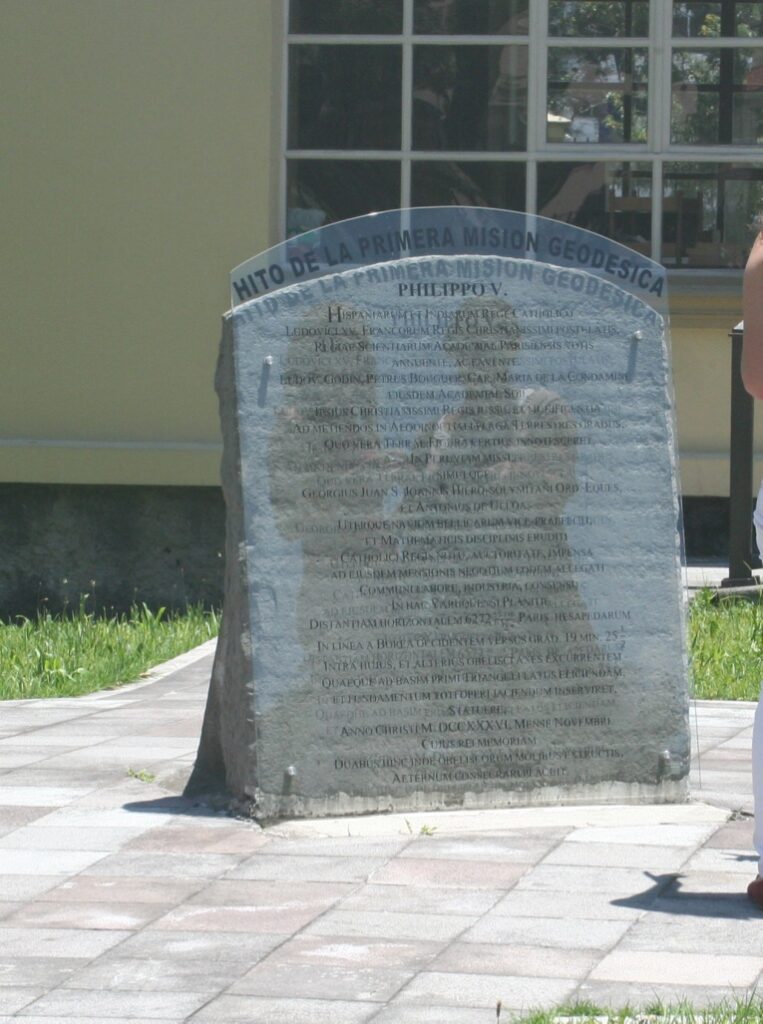
Inside the Observatory you’ll find a museum. The first item you encounter is a commemorative marble stone that also reminds us of the work of the French mission. In the middle of a scientific text in Latin, there’s a copper bar. A bar that’s exactly one “meter” long.
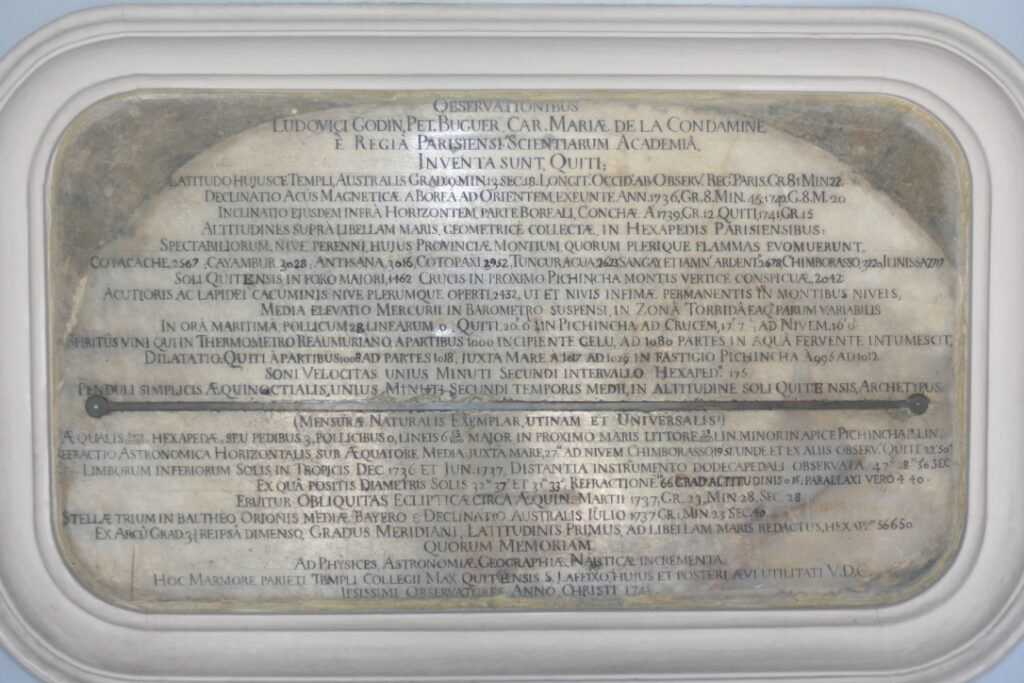
Standardizing measurements
- Note: At the time of the expedition many scientists in Europe tried to standardize measurements between countries. Not only the standard measurements for distance, but also for temperature, volume, weight, and others.
- Note: To standardize distance, the French wanted to introduce the “mètre” and scientists visiting Ecuador played a part in that process. By way of measuring the exact distance of a clock’s pendulum at the Equator. The result of this experiment was cast in copper (the copper bar above). Supposedly perfect material to guarantee perfection at the time, as other material – other metal types, stone or wood – caused unacceptable deviations due to the climate, temperature, humidity, et cetera.
- Note: Although the French mission hoped to stimulate the acceptance of the “mètre” as a standard measurement, it took until the French Revolution to get it accepted. Not only by the French, but also by other countries. That is, only partially, because most of the Anglo-Saxon countries never did.
Besides these two plaques, you’ll find many other items & instruments in the Observatory’s museum. Not one of them though used by the members of the first French expedition (some though left behind by the second mission). However, the exhibited ones give you an idea of the instruments they used, like the quadrant, the astrolabe or the sextant.
In front of the Observatory
Outside the Observatory, in front of the main gate, there’s another monument. A monument left behind bij the Second French geodesic mission. Remembering both missions. This artful monument is surrounded by busts of the main characters of the first expedition.
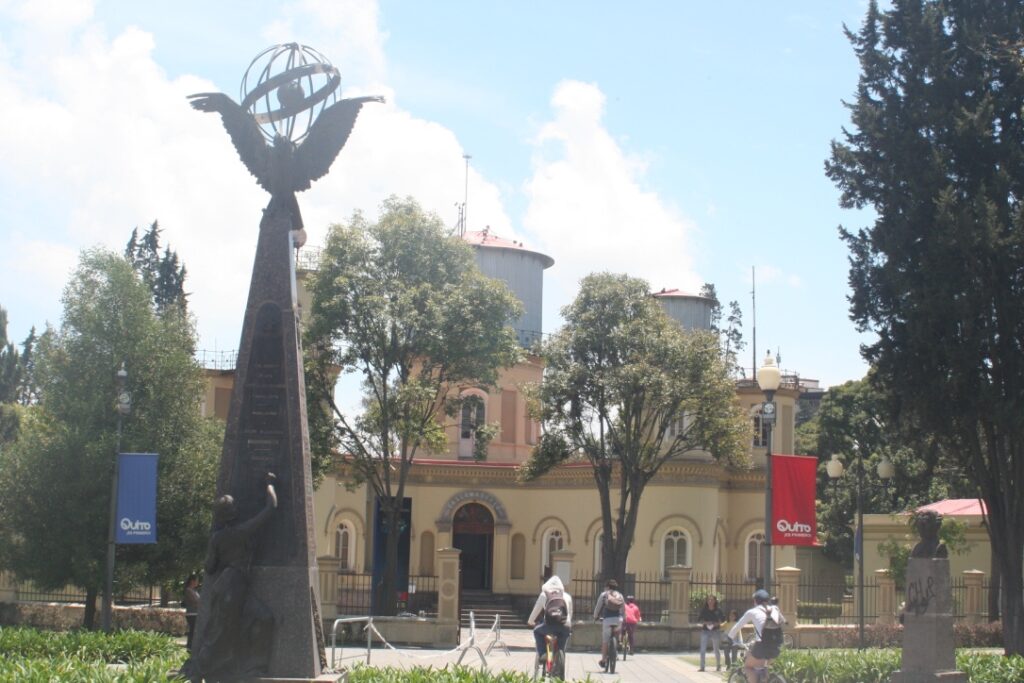
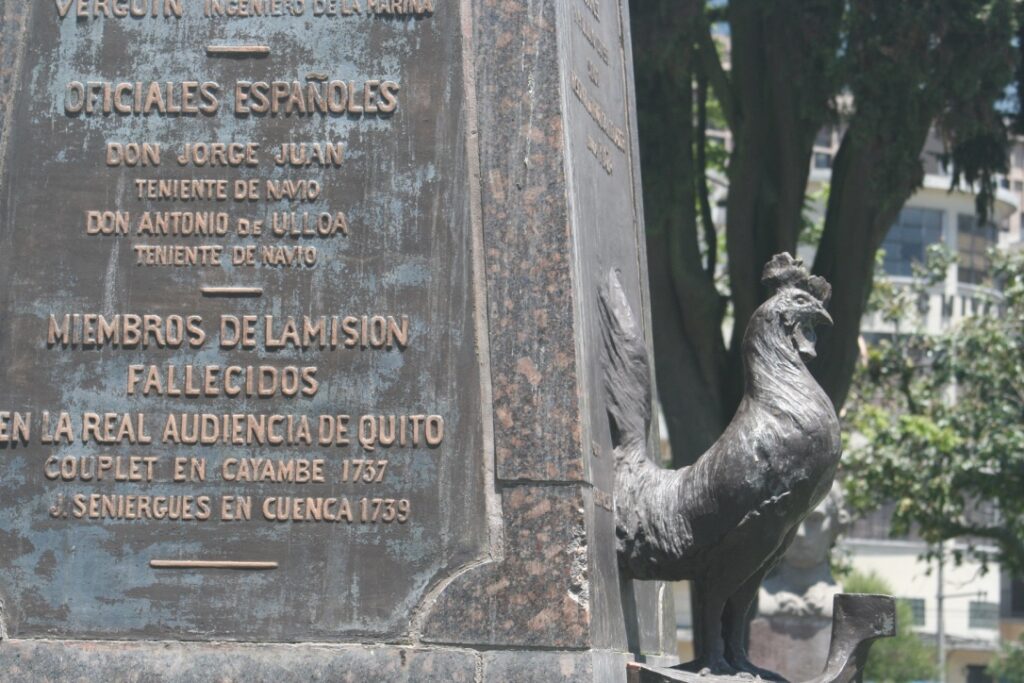
Journey through Ecuador: the Central highlands
Baños
After Quito our journey through Ecuador continued on to the central highlands. The area where Pedro Vicente Maldonado came from. Although he was born in Riobamba (that is, the former Riobamba!), we first noticed his “presence in stone” in Baños – where a school is named after him.
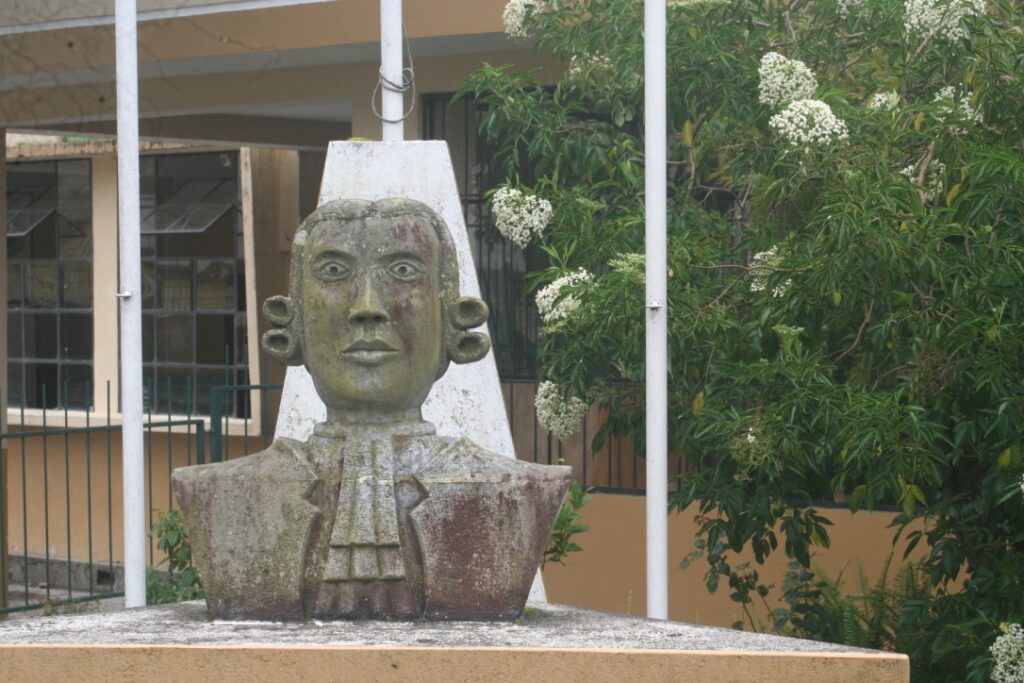
Riobamba
After visiting beautiful Baños (birthplace of our daughter Lisa) we went to Riobamba – the town where my life’s journey in Ecuador began in 1990 (see About me -section).
In the middle of Riobamba you’ll find an impressive, sky high statue of Maldonado. It’s placed in the central & most beautiful park of the Sultana de los Andes. A park therefore called Parque Maldonado. Here you’ll also find the town’s most beautiful church. Also the oldest church.
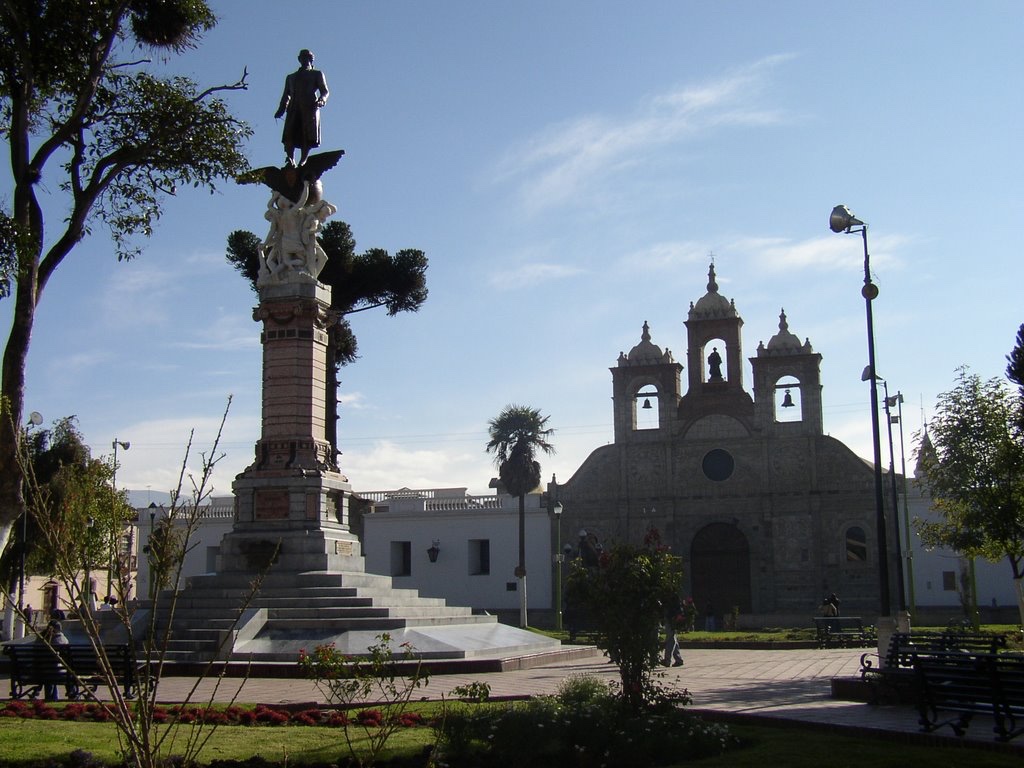
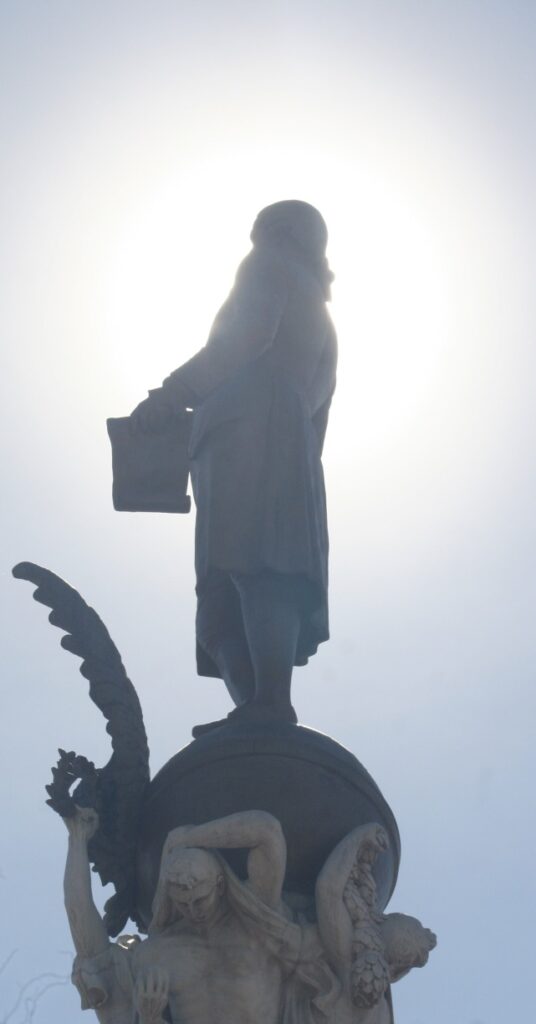
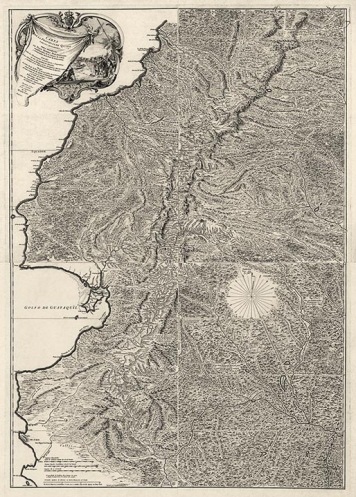
Cajabamba (the former Riobamba)
Leaving Riobamba, we headed out to the nearby town of Cajabamba. A much smaller place, but the original site of the city of Riobamba. The place were Maldonado was actually born.
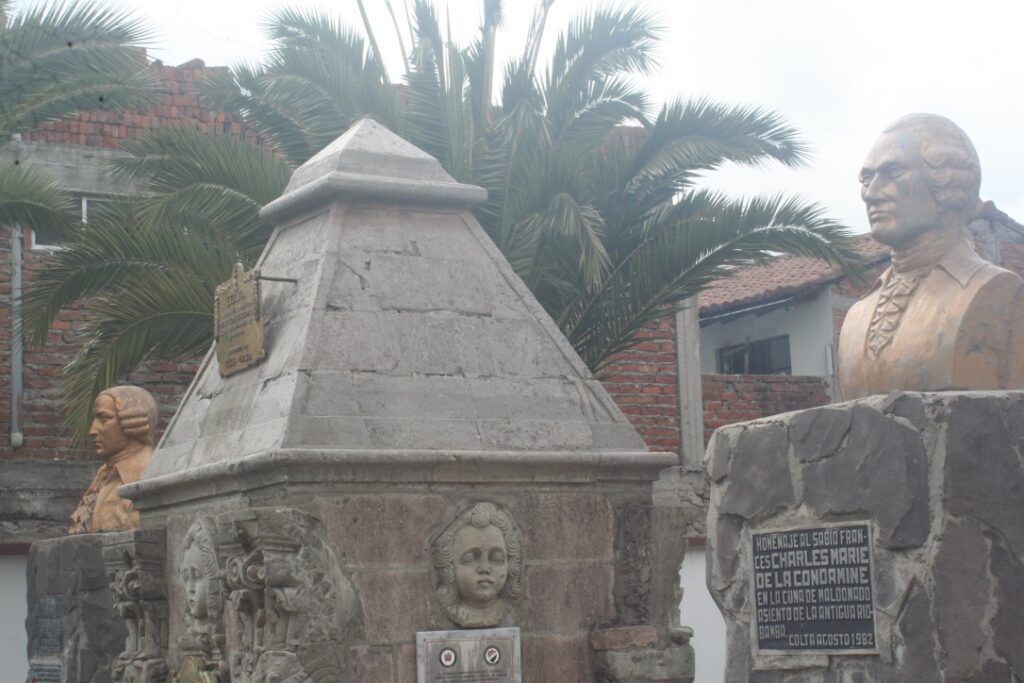
- Note: Cajabamba, the former Riobamba, was almost totally devastated by an heavy earthquake in February 1797. Years after Maldonado had died. Formally we must call Maldonado a Riobambeño, but it’s understandable that the local people prefer calling him a Cajabambeño. Simultaneously, it’s debatable whether you can call him an Ecuatoriano, as the name of the country didn’t exist during his lifetime. As “Ecuador” wasn’t independent yet, but still part of the Spain and the Viceroyalty of Peru.
- Note: Maldonado accompanied De la Condamine to Europe in 1743. A real adventure, because the Frenchman travelled the length of the Amazon River to Brasil before crossing the Atlantic from Cayenne, French Guyana. Maldonado was honored as a scientist in Paris and London, before traveling home again. However, while in London, he fell ill and died (1748). His remains never returned to his home country, but still lay buried in England.
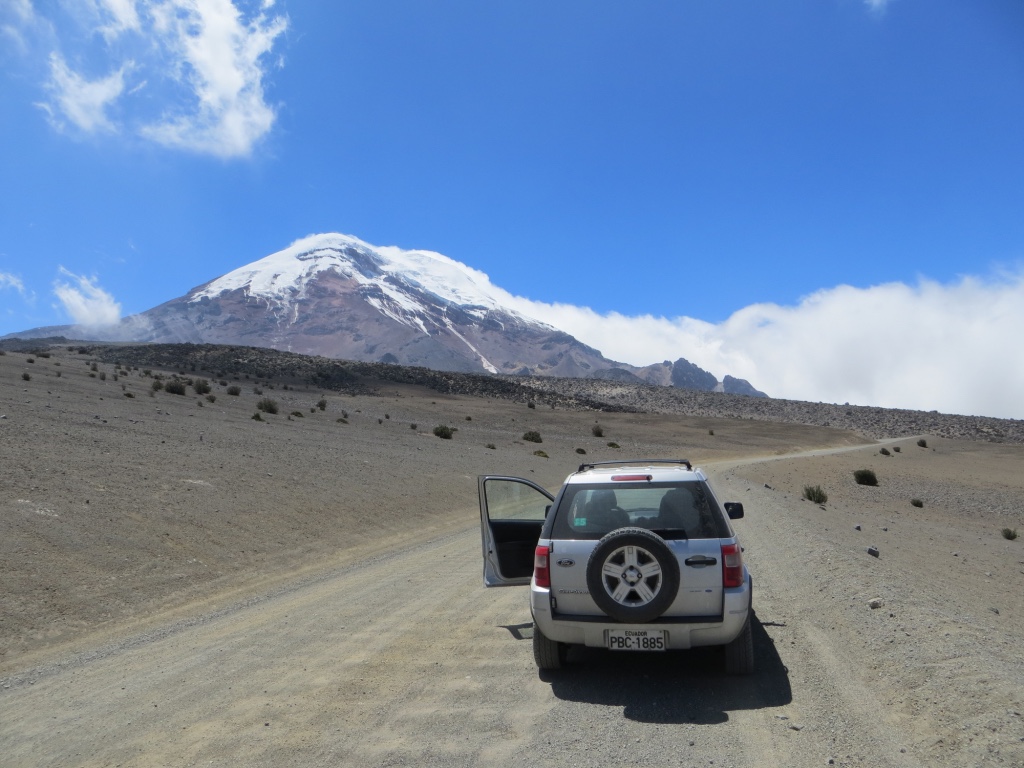
Southwards to Cuenca
After visiting Cajabamba we continued our journey through Ecuador southward.
While Ecuador’s capital Quito was used by the Frenchmen as a base to start their measurements, the southern city of Cuenca was the end station. The beautiful colonial city of Cuenca still houses several places that remember the French visitors.
First of all there’s the old cathedral, which the scientists used as one of the last observation posts for their measurements.
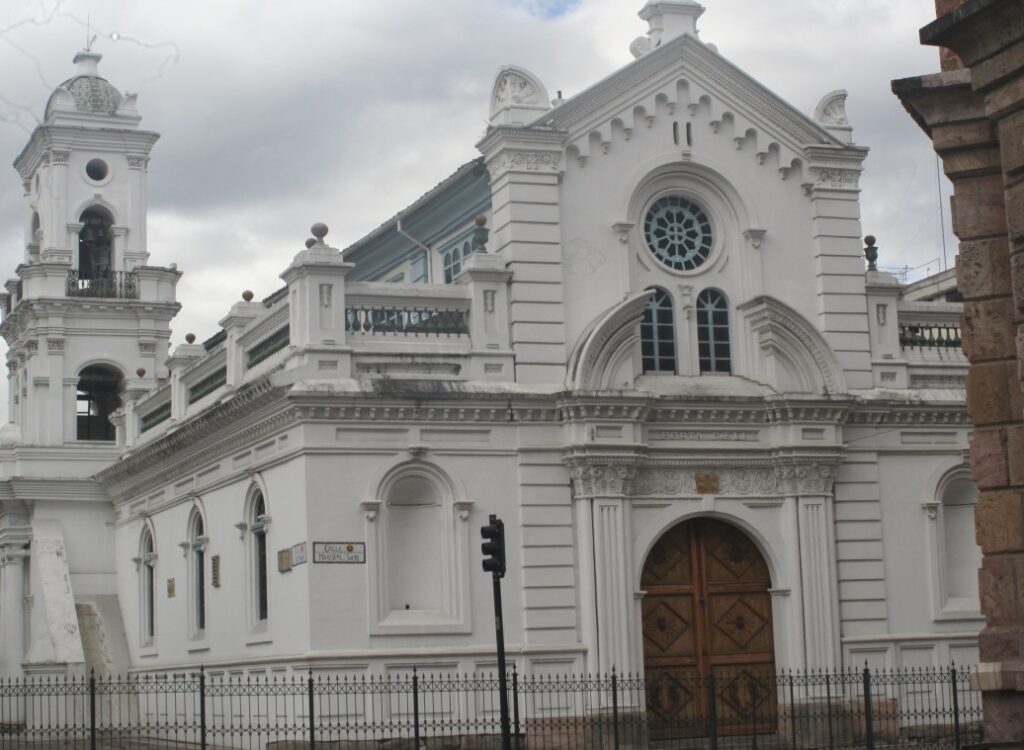
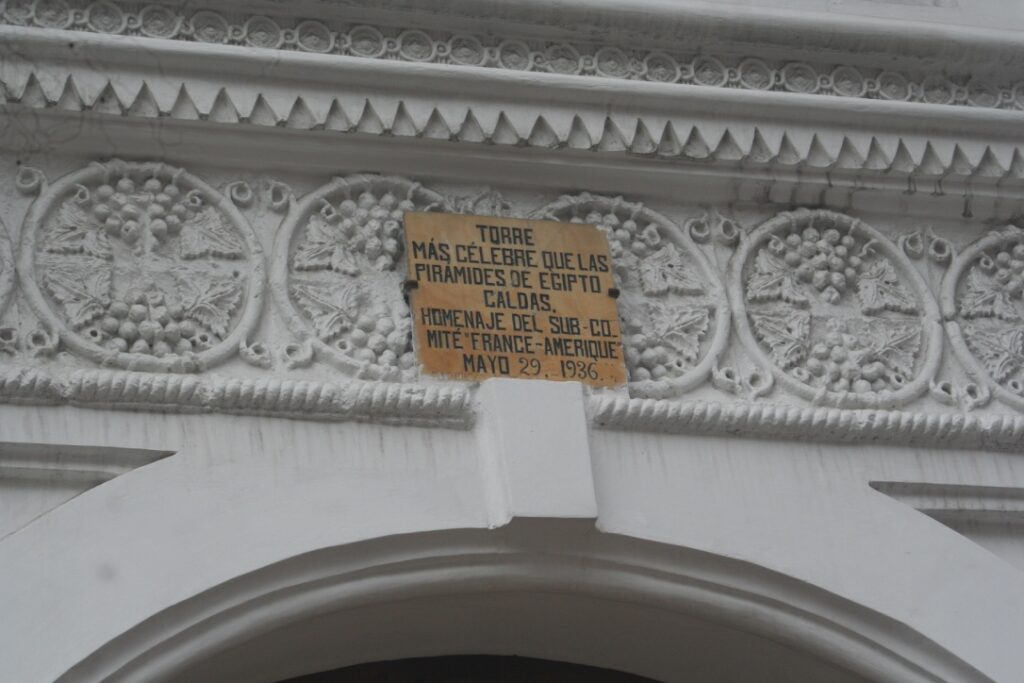
Also in the town’s center you’ll find the Plaza San Sebastián. It’s here that during a bull fight (1739) one of the Frenchmen – doctor Jean Seniergues – got into a fight, supposedly over a local beauty. The confrontation ended in a pursuit through the streets of Cuenca and injuries by a knife, from which the doctor soon died.
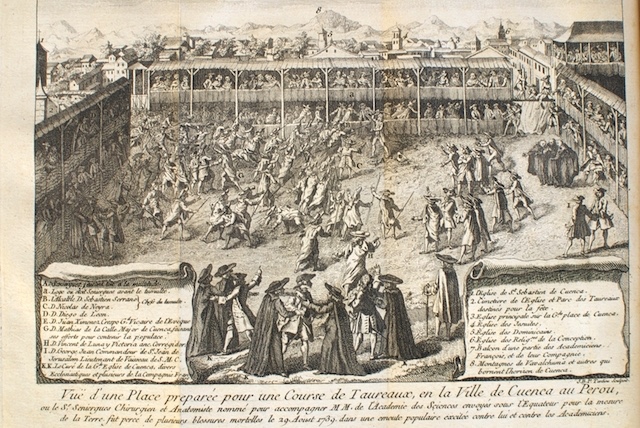
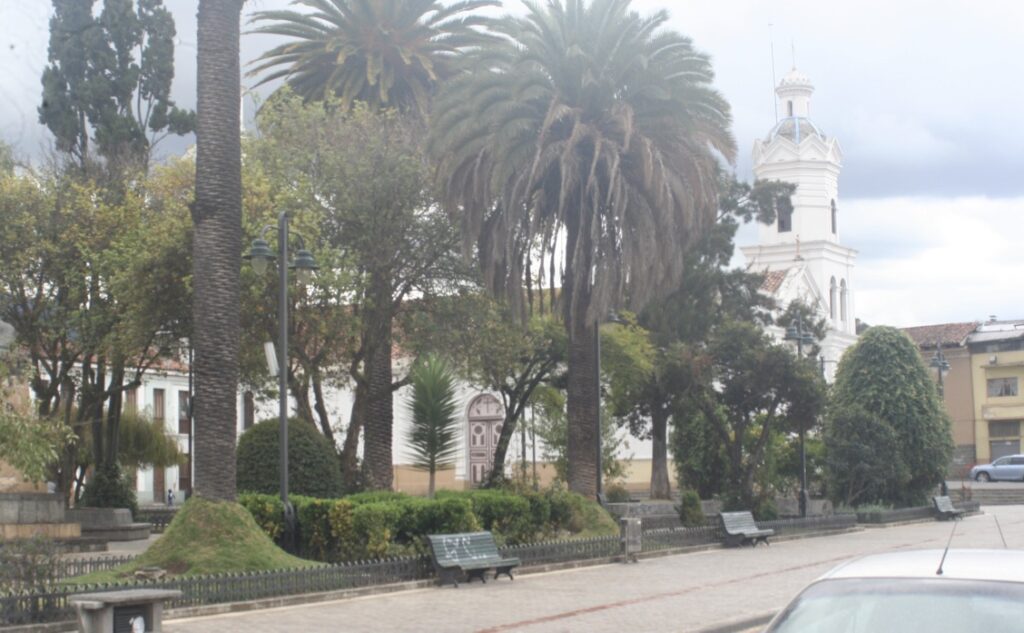
Frances Urco, south of Cuenca
A little to the south of Cuenca, there’s a small hill called Frances Urco, the hill of the French in Quichua, As we approached it from the northern side we had to climb the steep hill through knee high vegetation. Only to discover that on the south side there’s a marked path leading up, partially provided with stairs….. what a joke!
On the top op Frances Urco, we enjoyed a marvelous view of the area, and also found a proud, although somewhat somber, small obelisk to remember the French visit.
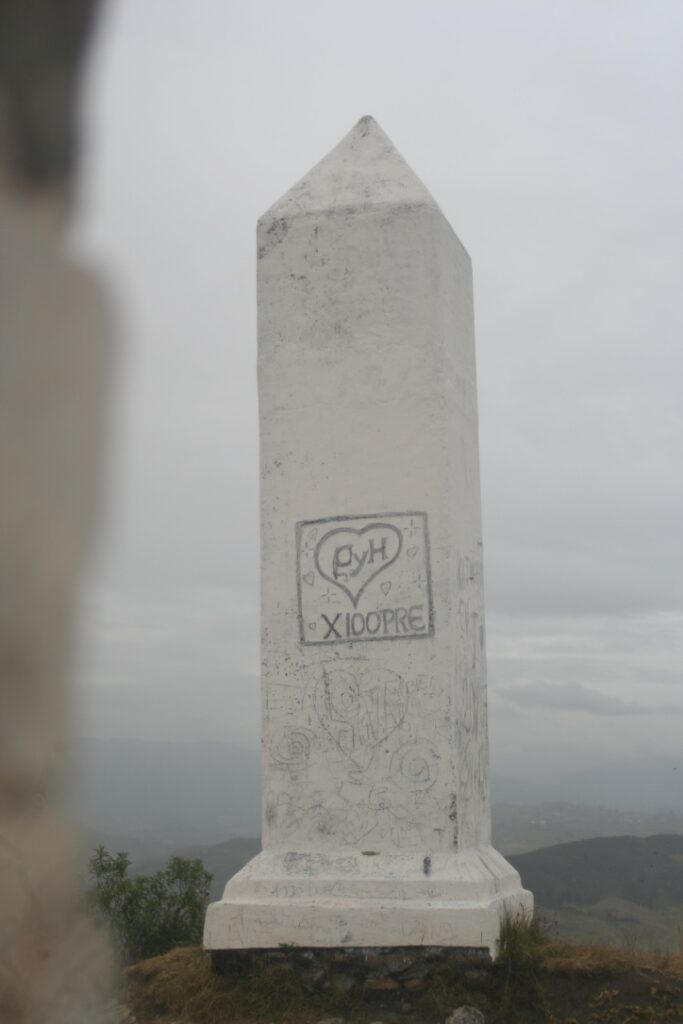
All in all, another adventure in the footsteps of the scientific mission. And, better still, also a place where local people actively take action to keep the past alive. Opening up an historical place in Ecuador to visitors (Instead of closing it down, like one of the pyramids near Quito).
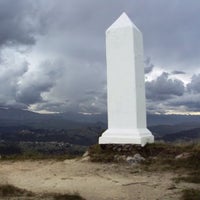
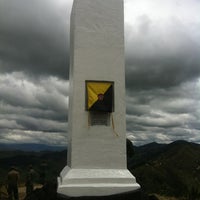
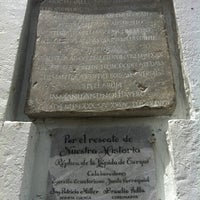
- Note: A year after our visit, in 2013, the obelisk was decorated by a commemorative plaque… and was painted over. Great initiative!
A quick break at the Coast
After Cuenca we headed to the coast by way of the Cajas National Park and Guayaquil. Knowing full well that most expeditionaries started their journey through Ecuador just there, in Guayaquil. After a relatively short boat ride they continued their journey by mule and on foot to Ecuador’s capital Quito. A hard journey up to 3000 m.a.s.l. and more, taking them two and a half weeks to complete.
We mainly visited the coastal region to relax a little. We didn’t visit any “Condamine-trip” monuments. The only one I really know about you’ll find in Pedernales, where two of the Frenchman passed through on an alternative northern route to the capital (De la Condamine, with Pierre Bouguer).
And back to the highlands
We ended our journey through Ecuador in the Hacienda La Ciénega, which nowadays is a hotel. A historical place with a long history, where the Frenchmen stayed while taking measurements in the central part of Ecuador around the Cotopaxi volcano.
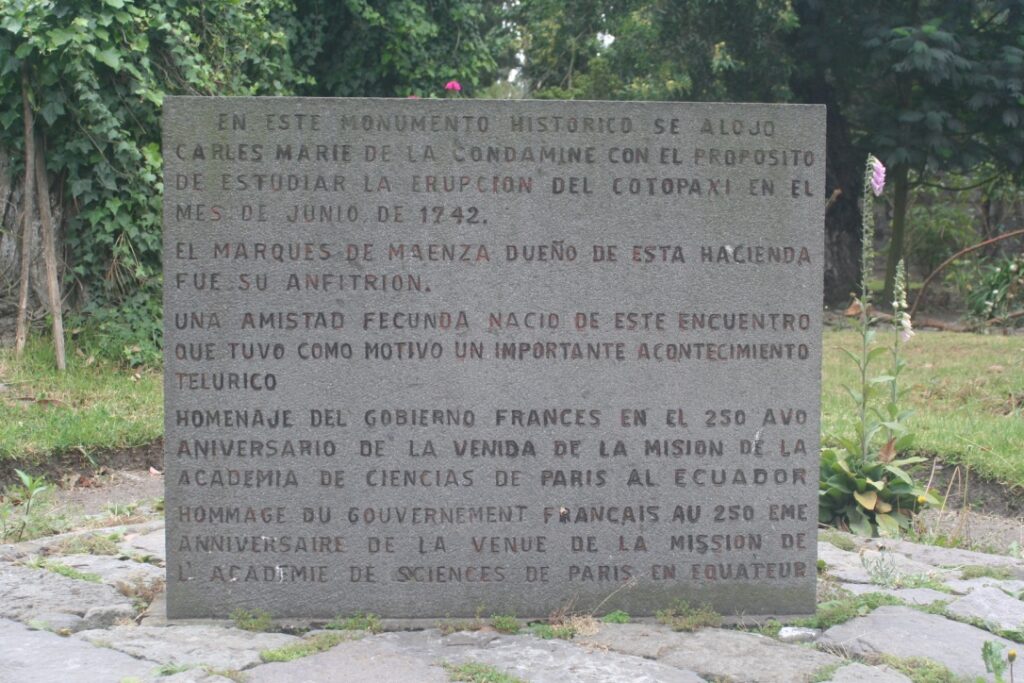
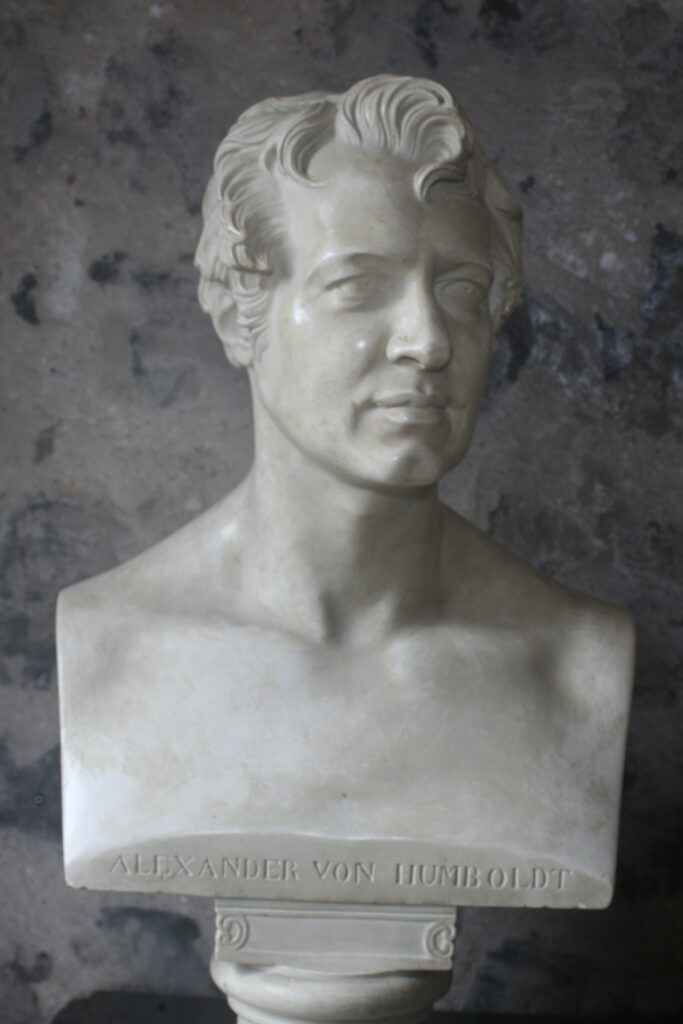
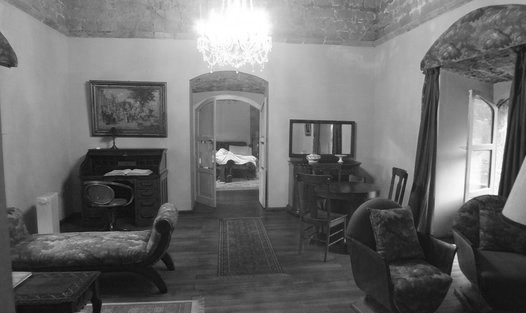
- Note: About 60 years later the famous German scientist stayed in the room above at the Hacienda La Ciénega.
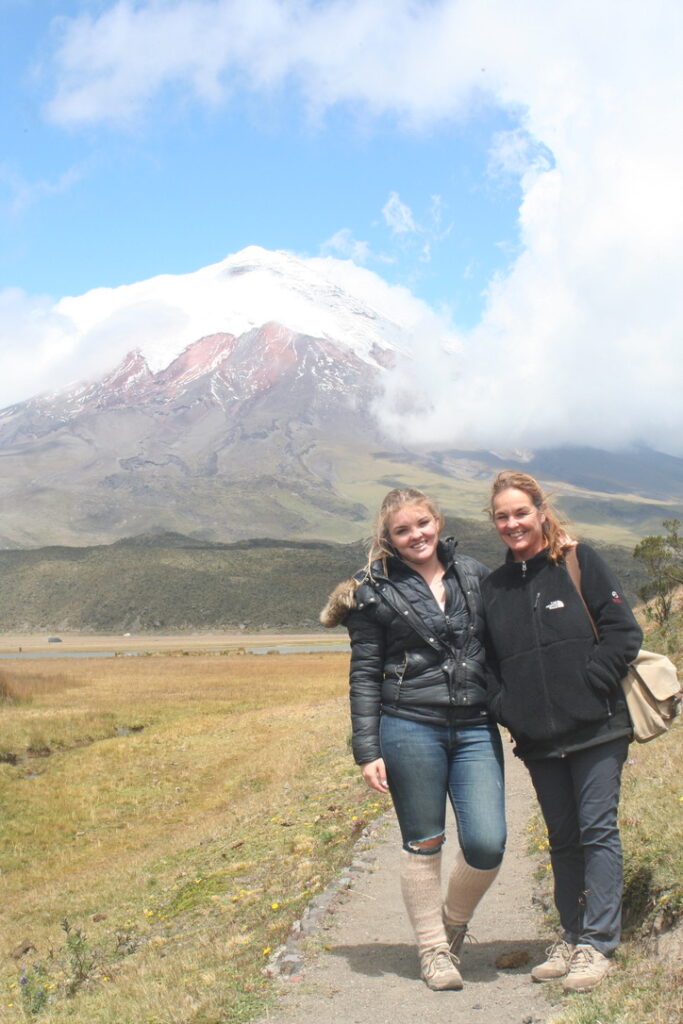
Surely, the French left other monuments along the way. During our journey through Ecuador we visited the most important ones.
But finally I have to say that the glorious Andes-mountains of Ecuador – like Cotopaxi, Chimborazo, but also the Pichincha, Ilinizas, el Corazón – are the most important monuments to their endeavours. They had to climb them one by one to fulfil their duty, and to “Measure the Earth” .
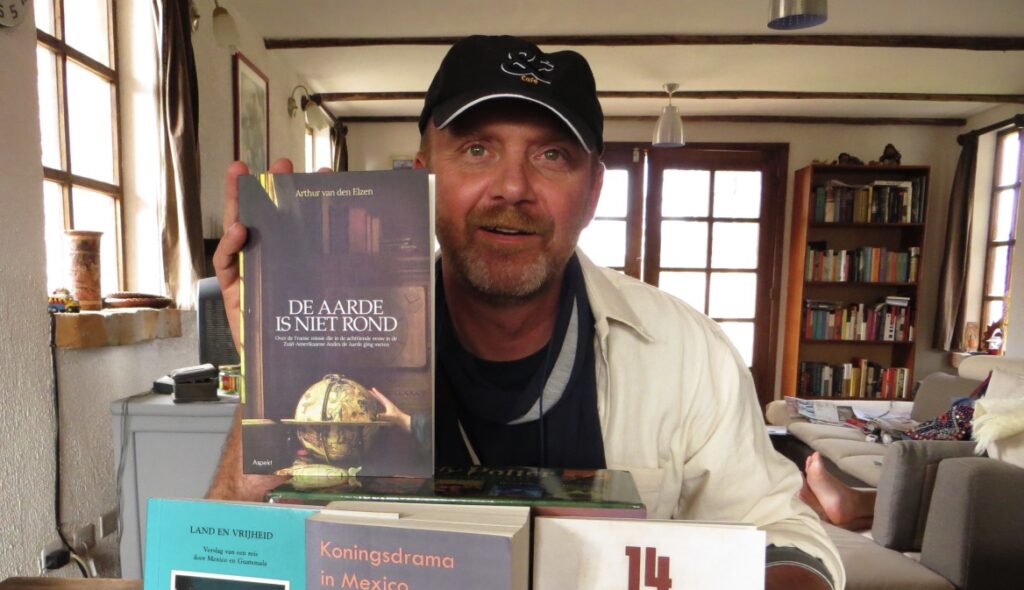
My book about the French mission, only available so far in Dutch: De Aarde is niet rond.
*****
- For all the latest news on Ecuador, join my Visit Ecuador Facebook Group.
.
For an overview of all travel posts of my blog, go to: the Home Page.
- Final message, for fellow travel writers & bloggers: TravelPayOuts is a global integrated affiliate program focused exclusively on travel offers. If it works for me, it will probably work for you too: TravelPayOuts.


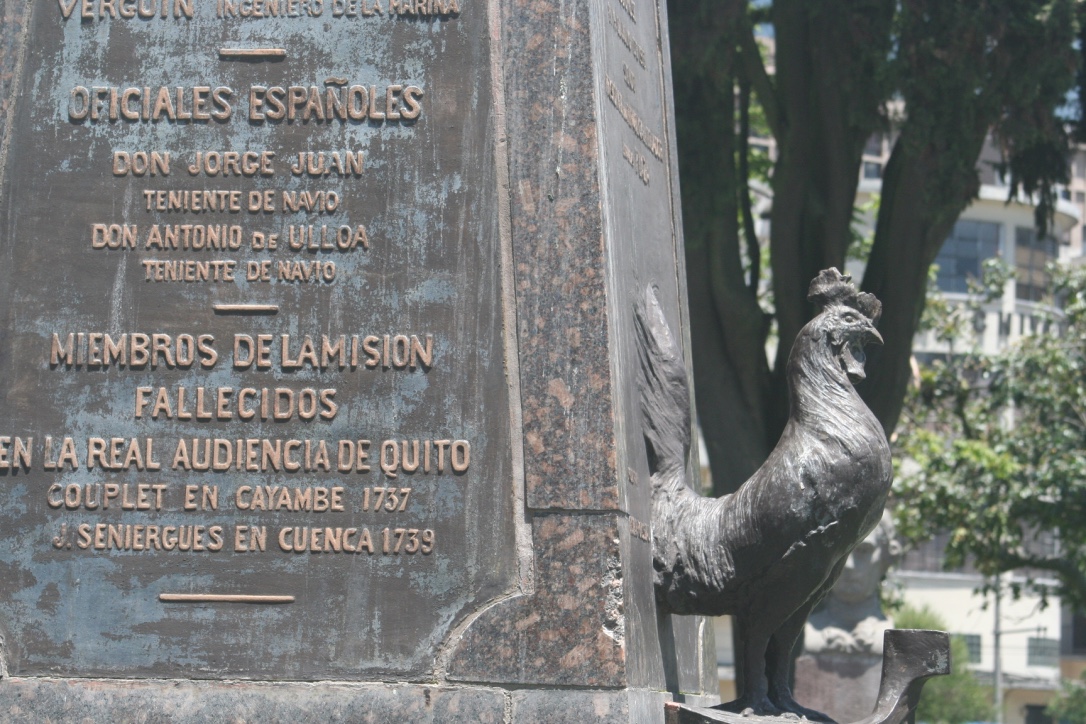
Comments
3 responses to “Ecuador – Monuments of the French mission”
interesting Arthus, nice trip
Thanks again, Jean! You touched some footsteps while here!
[…] Ecuador – Monuments of the French mission […]